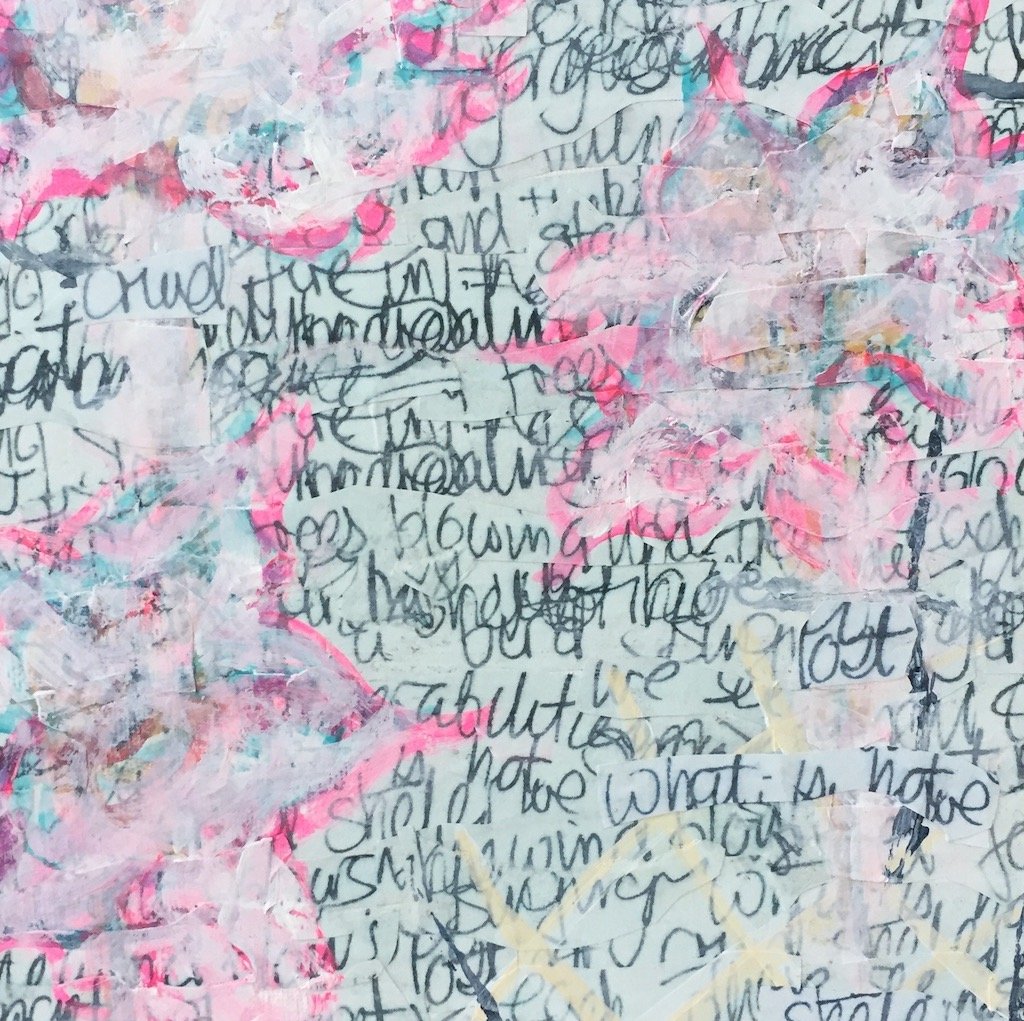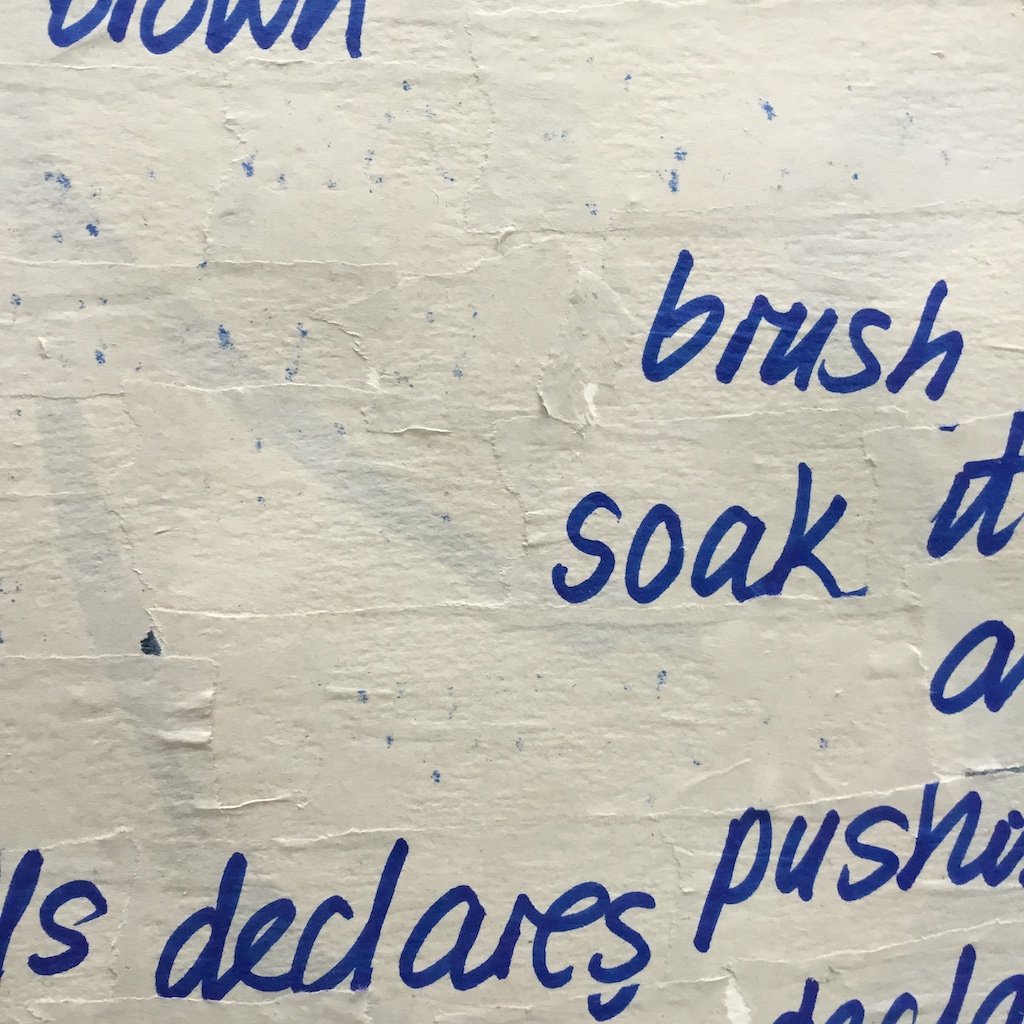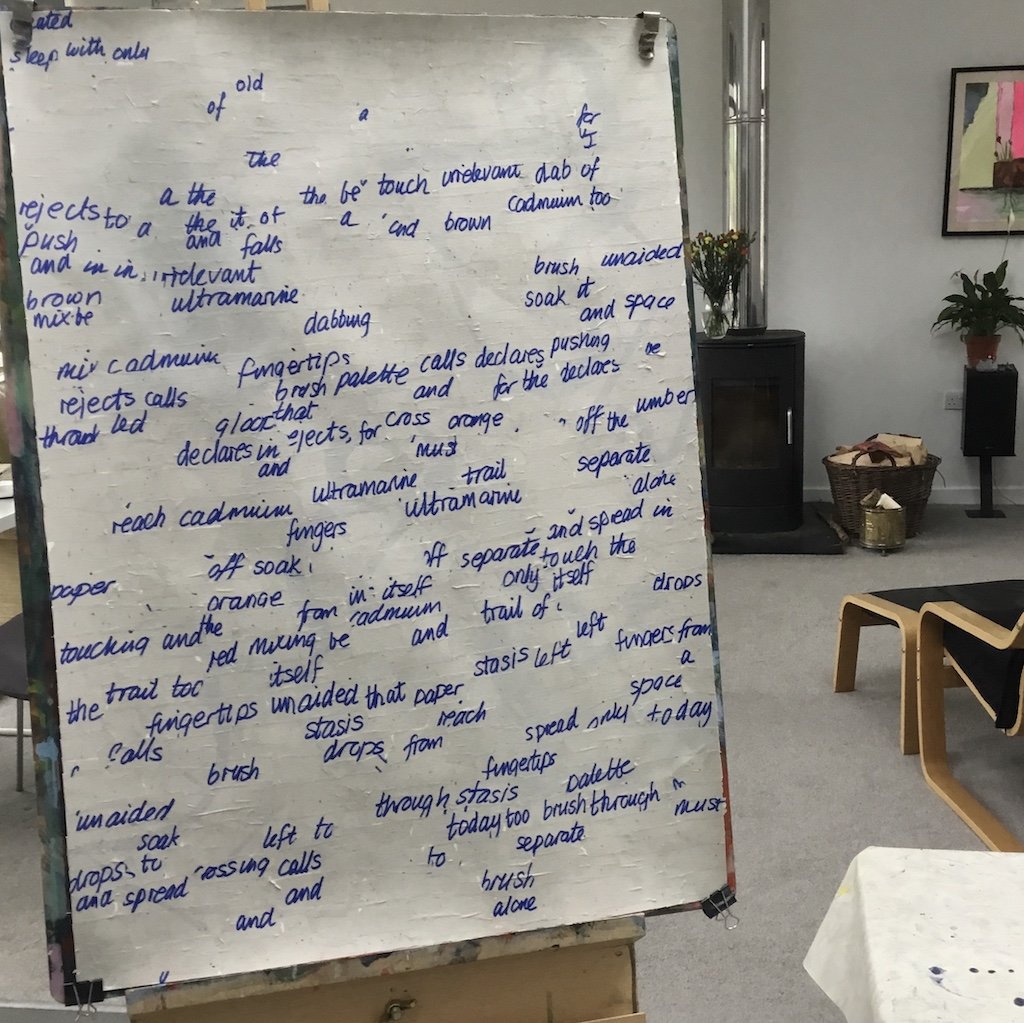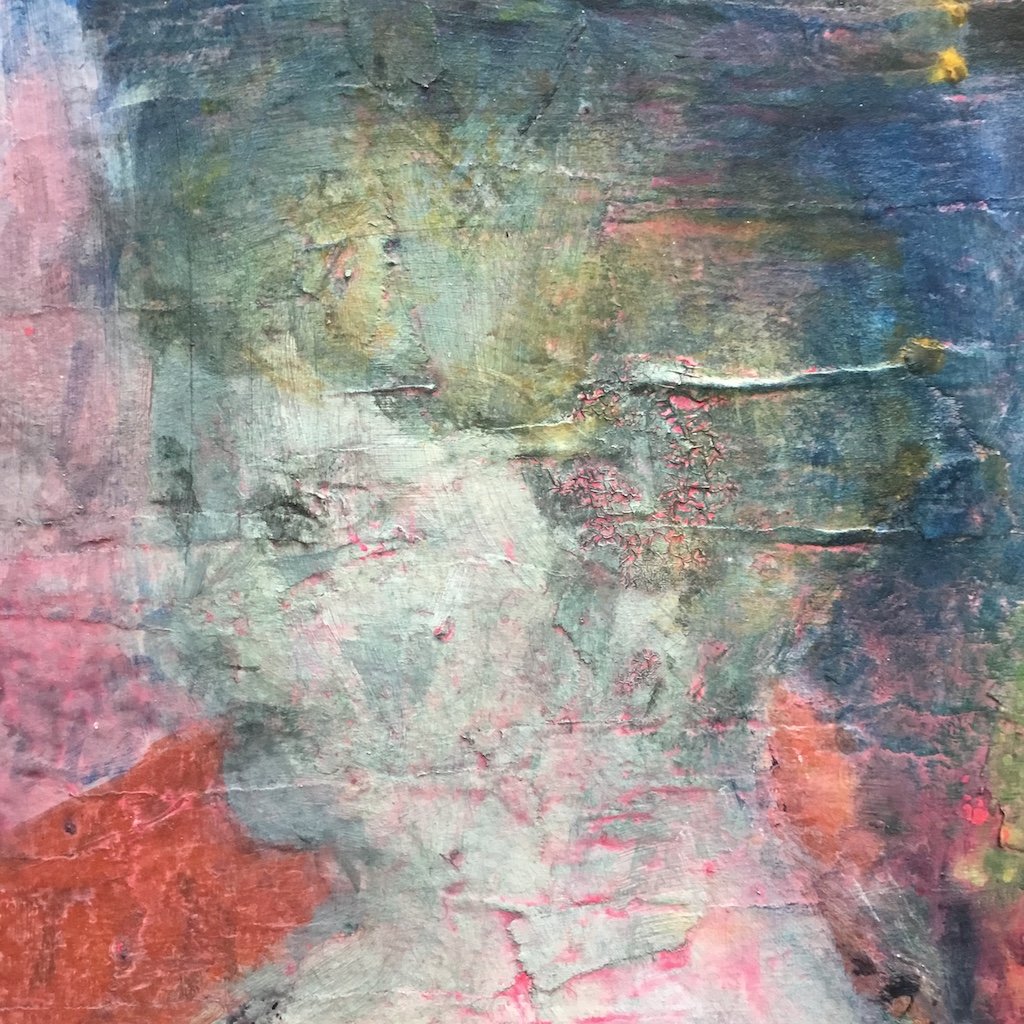The cracked and broken surfaces I've been creating recently in my painting seem to speak to the storms and the destruction of Ukrainian homes and lives we are being forced to witness this week.
Wood and then canvas were traditional surfaces for oil paint. I learnt years ago how to stretch canvas on to wooden stretchers and prime it with rabbit skin glue (nowadays no rabbits are involved) and chalk gesso to create a smooth and not-too-absorbent ground to receive the paint. I experimented with various kinds of textured surfaces made with thick gesso or by placing torn paper, pumice, or sand into the gesso. About five years ago, I started ripping up words on paper and sticking those on to create surfaces that hold fragments of meaning as well as texture (below left).
During lockdown I’ve developed this process, gluing torn up poetic writing on to large sheets of watercolour paper. I was first removing all the spaces between words, and in the last months have relented and included blank strips (above right). It seems to matter that the base layer of paper is mostly covered with these word-sized strip of thinner paper. The process of writing and ripping focuses my attention on the words and becomes a stage in editing the poems. Tearing and gluing opens up a place for contingency – accidental overlaps, juxtapositions or gaps.
Once I start laying paint on the surface more unpredictability follows - in how colour is absorbed, in how far words are covered or allowed to appear. The surface interacts with the image continuously during painting. Painting is a process of both adding and removing, and the textured, layered surface reacts unpredictably. Sometimes further textures are created as the top layer of painting is rubbed off and over-painted.
I’m finding the complexity and uncertainty of painting on layered surfaces produces images that feel particularly tender and hard-won.
It makes all the difference, acrylic and collaged writing on paper, Lynne Cameron





